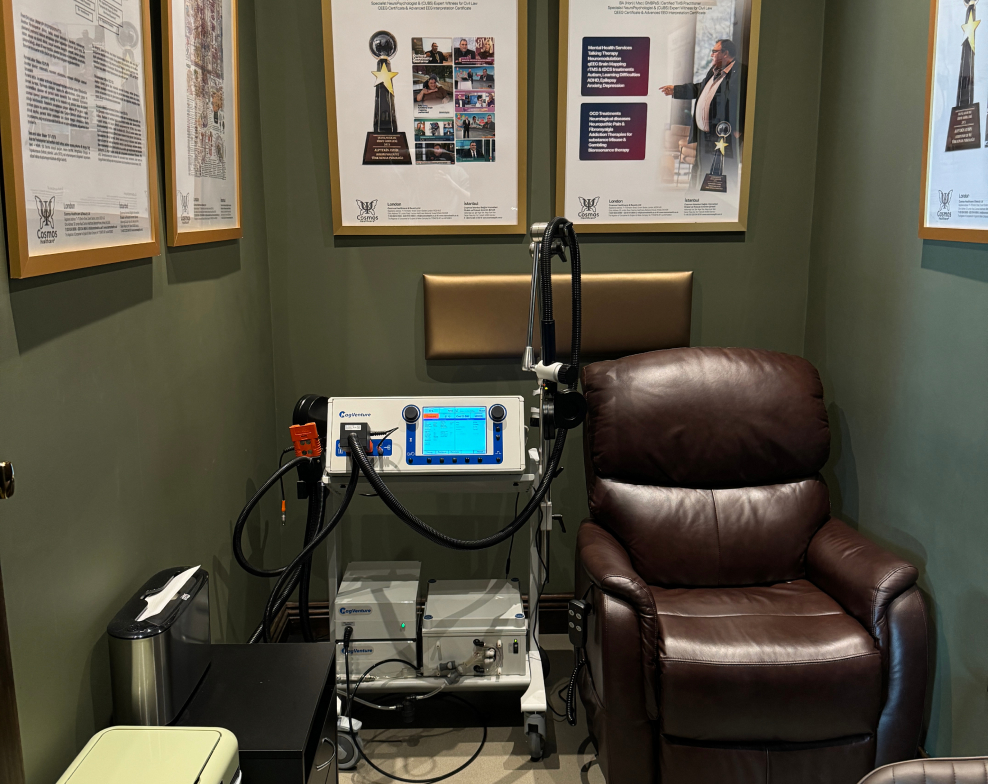

QPAN® together with Neuromap® offers advanced capabilities for detecting Alzheimer’s Disease (AD) at its earliest stages.
AD represents a progressive disease that destroys neurons and leads to a step-by-step deterioration of memory and cognitive abilities along with executive function decline. Existing diagnostic methods generally detect AD at stages when neuronal damage has already become extensive. Advanced qEEG-based functional brain mapping combined with AI-powered Neuromap analytics and the QPAN® Model has ushered in a revolutionary change for early detection and intervention.
The QPAN® system combined with Neuromap® analytics uses biomarker-based neurophysiological assessments along with predictive artificial intelligence algorithms to identify Alzheimer’s disease changes before clinical symptoms develop which enables earlier intervention and improved prognosis while potentially slowing the progression of the disease.
QPAN® and Neuromap® systems recognize early Alzheimer’s disease indicators through their advanced technology.
Through quantitative electroencephalography (qEEG) analysis of brain electrical activity the QPAN® Model and Neuromap® deliver detailed cognitive decline insights which conventional MRI or CT scans fail to reveal. While structural scans reveal physical atrophy during advanced disease stages qEEG-based Neuromap analysis identifies functional and connectivity changes that manifest during Alzheimer’s Disease’s earliest phases.
Quantitative electroencephalography (qEEG) functions as an early diagnostic biomarker for Alzheimer’s Disease (AD).
Research shows that Alzheimer’s disease causes changes in brain electrical activity before clinical symptoms manifest.
By analyzing qEEG data, Neuromap® can detect:
– Early cognitive decline and memory issues show through increased theta power activity in the frontal and temporal
lobes which serves as a recognized biomarker. Excessive theta wave activity found in the prefrontal and medial temporal cortices serves as an early indicator for Alzheimer’s disease development.
– Reduced alpha power in parietal areas serves as a marker for decreased information processing speed and sensory integration impairment which typically present in Alzheimer’s disease initial stages.
– Research shows that reduced peak alpha frequency serves as a proven marker of cognitive decline. Scientific studies demonstrate that reductions in dominant alpha brainwave patterns align with decreased executive function and memory capabilities.
– Arterial damage to the hippocampus during early Alzheimer’s Disease stages enables qEEG to identify connectivity breakdowns between the hippocampus and other cortical areas which serve as precise early-stage biomarkers.
Neuromap utilizes machine learning and deep-learning algorithms to match qEEG findings with neurophysiological databases for accurate statistical pattern recognition and early AD risk prediction.
AI-Powered Neuromap Analysis for Predictive Diagnostics
Neuromap’s integration of AI-driven predictive modeling into qEEG-based assessments marks a major advancement in early Alzheimer’s detection. Neuromap identifies early-stage neural abnormalities in Alzheimer’s disease which traditional diagnostic methods fail to detect since they depend on observable behavioral decline.
– The algorithm processes extensive qEEG pattern datasets to differentiate normal cognitive aging from the pathological changes characteristic of Alzheimer’s Disease.
– Neuromap identifies individuals at risk before severe neurodegeneration develops which allows for early treatment that leads to better results.
– Neuromap improves its detection model through continuous updates from new data which leads to better accuracy in early-stage Alzheimer’s diagnoses.

Personalized Risk Assessment and Intervention Planning
QPAN® and Neuromap® deliver brain function reports tailored to individuals unlike universal diagnostic methods.
– Early Alzheimer’s pathology specifically targets distinct cortical regions in the brain.
– The brain functioning reports from QPAN® and Neuromap® show how quickly cognitive decline occurs and how severe it becomes.
– rTMS and tDCS represent the optimal neuromodulation treatment options to halt additional neurological deterioration
QPAN® uses personalized neuromodulation protocols to restore brainwave balance and delay Alzheimer’s symptoms and strengthen cognitive resilience after creating an individualized risk profile.
Scientific Validation: Research Supporting qEEG-Based Early Detection of AD
Latest neuroscience research shows that qEEG biomarkers stand out as the most dependable indicators of Alzheimer’s disease.
– The Journal of Alzheimer’s Disease published a meta-analysis which demonstrated that cognitive decline can be predicted up to five years before clinical diagnosis through changes in theta and alpha power measured by qEEG. ([PubMed])
– Frontiers in Aging Neuroscience research showed that machine learning models based on qEEG reached over 85% accuracy to tell apart early AD patients from healthy people which makes it a top early detection tool. ([Frontiers in Neuroscience])
The QPAN® Model and Neuromap® enhance AD diagnostic capabilities by delivering personalized risk assessments and real-time results with unmatched precision.
The QPAN® Model combined with Neuromap empowers healthcare professionals to detect Alzheimer’s disease early which leads to more effective treatment interventions.
Early detection of Alzheimer’s disease enables preventive neuromodulation approaches which helps delay cognitive deterioration while enhancing life quality.
The QPAN® Model identifies Alzheimer’s risk factors using qEEG together with Neuromap.
– Instead of responding to advanced cognitive impairment through treatment we can start medical intervention when initial abnormal brain activity becomes evident.
– Through personalized brain stimulation protocols using rTMS or tDCS methods neural activity modulation restores balance and cognitive function before substantial decline sets in.
– Through qEEG assessments medical professionals can modify treatment plans on an ongoing basis to match each changing neurophysiological profile.
The Future of Alzheimer’s Prevention: Why qEEG-Based Neuromodulation is the Gold Standard
Conventional diagnostic approaches cannot identify Alzheimer’s disease until permanent brain damage takes place. QPan® and Neuromap® alter the Alzheimer’s disease detection pathway through their advanced capabilities.
– QPAN® and Neuromap® enable the early detection of Alzheimer’s disease biomarkers with superior sensitivity.
– Predictive modeling powered by artificial intelligence provides early risk stratification capabilities.
– Precision-guided neuromodulation therapy , preventing further neurodegeneration.
QPAN® and Neuromap® use qEEG brain mapping combined with AI analytics to deliver a scientifically-backed advanced system for early diagnosis and treatment of Alzheimer’s disease.
This method affects more than regular medical practice by giving hope to people who might experience cognitive deterioration while transforming modern neurodegenerative disease diagnosis and treatment approaches.